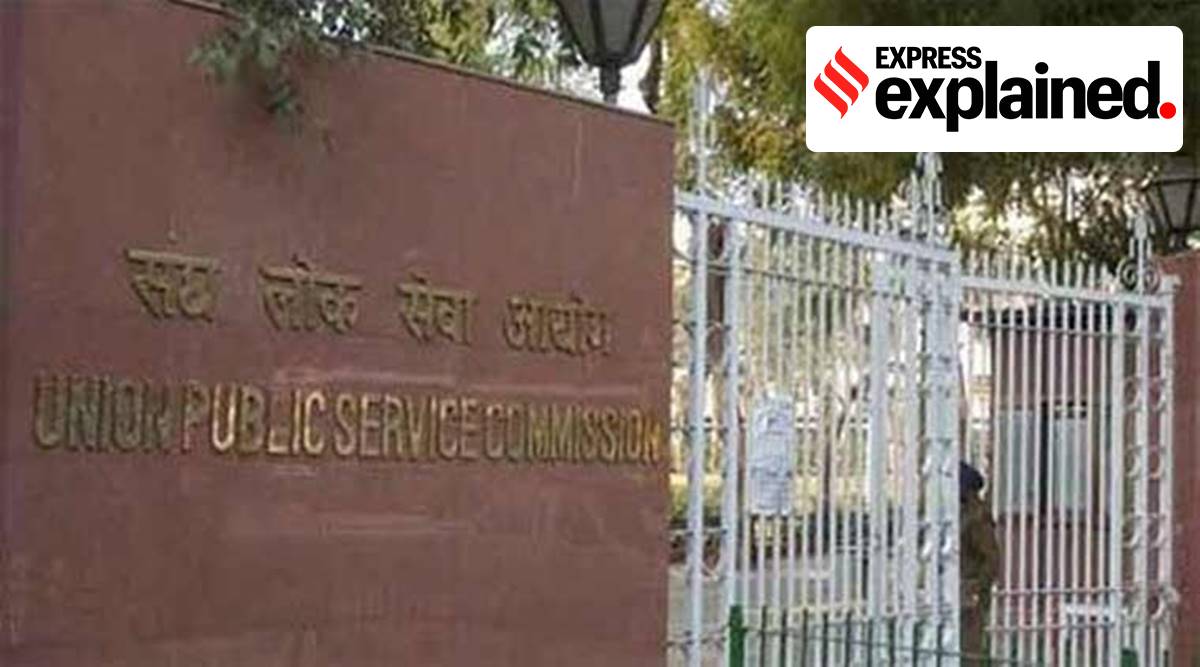
Earlier this month, the Union Public Service Commission (UPSC) issued an advertisement seeking applications “from talented and motivated Indian nationals willing to contribute towards nation building” for three posts of Joint Secretary and 27 of Director in central government Departments.
These individuals, who would make a “lateral entry” into the government secretariat, would be contracted for three to five years. These posts were “unreserved”, meaning were no quotas for SCs, STs and OBCs.
What is ‘lateral entry’ into government?
NITI Aayog, in its three-year Action Agenda, and the Sectoral Group of Secretaries (SGoS) on Governance in its report submitted in February 2017, recommended the induction of personnel at middle and senior management levels in the central government. These ‘lateral entrants’ would be part of the central secretariat which in the normal course has only career bureaucrats from the All India Services/ Central Civil Services.
A Joint Secretary, appointed by the Appointments Committee of the Cabinet (ACC), has the third highest rank (after Secretary and Additional Secretary) in a Department, and functions as administrative head of a wing in the Department. Directors are a rank below that of Joint Secretary.
What is the government’s reasoning for lateral entry?
On July 4, 2019, Minister of State for DoPT Jitendra Singh told Rajya Sabha that “Government has, from time to time, appointed some prominent persons for specific assignments in government, keeping in view their specialised knowledge and expertise in the domain area”.
In a separate response to a similar question in the same House, he said: “Lateral recruitment is aimed at achieving the twin objectives of bringing in fresh talent as well as augment the availability of manpower.”
Has the government so far made any ‘lateral entry’ appointments?
The new ad is for the second round of such recruitments. Earlier, the government had decided to appoint experts from outside the government to 10 positions of Joint Secretary in different Ministries/Departments and 40 positions at the level of Deputy Secretary/Director.
The ad for the Joint Secretary-level appointments, issued in early 2018, attracted 6,077 applications; after a selection process by the UPSC, nine individuals were recommended for appointment in nine different Ministries/Departments in 2019.
One of these individuals, Kakoli Ghosh, did not join; the rest — Amber Dubey, Rajeev Saksena, Sujit Kumar Bajpayee, Dinesh Dayanand Jagdale, Bhushan Kumar, Arun Goel, Saurabh Mishra and Suman Prasad Singh — were appointed on a three-year contract. Arun Goel resigned in December last year to return to the private sector.
Why is lateral entry sometimes criticised?
Groups representing SCs, STs and OBCs have protested the fact that there is no reservation in these appointments.
After Finance Minister Nirmala Sitharaman tweeted a link to the government’s notification on February 5, saying “Lateral Recruitment for Joint Secretary Level and Director Level Posts on Contract Basis. Interested candidates can apply from the 6th of February 2021 to 22nd March 2021,” Bihar Leader of Opposition Tejashwi Yadav shot back: “You should explain whether UPSC selection procedure is failing to ensure ‘willing, motivated & talented’ candidates for ‘nation building’, or hand-picked ones are more so? Isn’t it another ploy to sideline & reduce reservations for deprived sections?”
Former UP Chief Minister Akhilesh Yadav tweeted, “BJP is opening back doors to bring its own people openly. Who cares about those candidates who are preparing for years?”
So are these contractual appointments not open for quotas?
In a May 15, 2018 circular, the DoPT noted that “in respect of appointments to Central Government posts and services there shall be reservation for Scheduled Caste/Scheduled Tribe/Other Backward Class candidates in temporary appointments which are to last for 45 days or more”. This was a reiteration — with OBCs added — of a circular issued by the Ministry of Home Affairs as far back as on September 24, 1968.
However, there is a reason why these posts are claimed to be “unreserved”.
As per the currently applicable “13-point roster”, there is no reservation up to three posts. File notings provided by the DoPT to The Indian Express (reported on June 14, 2019) under the RTI Act state, “In a single post cadre, reservation does not apply. Since each post to be filled under this scheme is a Single Post, reservation is not applicable.”
Each of the nine individuals appointed in 2019 was recruited as a separate appointment — had they been considered as a group of nine, there would have been at least two seats for OBCs and one seat for an SC candidate as per the Centre’s reservation rules.
Likewise in the latest advertisement, if the 27 Directors were considered as a single group, seven posts would have to be reserved for OBCs, four for SCs, one for ST, and two for EWS category, as per the 13 point roster. But as they have been advertised/ considered separately for each Department, all of them have been declared “unreserved”.
"entry" - Google News
March 01, 2021 at 11:29AM
https://ift.tt/3kB4gVx
‘Lateral entry’ into bureaucracy: reason, process, and controversy - The Indian Express
"entry" - Google News
https://ift.tt/3f5ZAUJ
https://ift.tt/3d6LMHD
Bagikan Berita Ini














0 Response to "‘Lateral entry’ into bureaucracy: reason, process, and controversy - The Indian Express"
Post a Comment